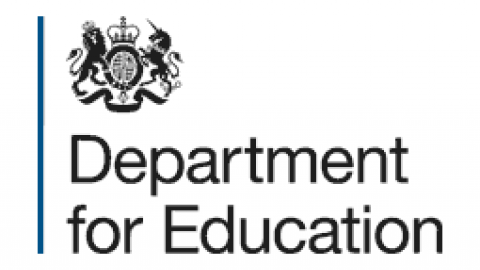Catch-Up Curriculum – What is it and what is the impact?
At Burton Salmon Primary School, we are acutely aware of the challenges and impact that Covid 19 has had and continues to have on our pupils. We have worked hard to support our pupils, families and community through the pandemic whilst also preparing to drive the pupil’s learning once they were back in school. To be able to do this effectively, we individually considered each pupil’s personal circumstances and offered any social or emotional support they required. The federation undoubtedly benefits from the addition of a Pastoral Support Worker, who works across the federation, liaising and offering to support to our children and families.
Prior to the start of the 2020/2021 academic year, there was also the opportunity for the pupils who were preparing to enter Year 5 and 6 to attend morning tutoring sessions over a two-week period, which were delivered by the Head of School during the summer holiday break. This proved an invaluable opportunity to help to prepare them for their return to school socially, emotionally and academically.
What is the Catch-Up Curriculum?
Our starting point in regards to teaching and learning was to design a comprehensive ‘Catch-Up Curriculum’ for every year group. This identified the learning that may have been missed or not retained from the previous (2019/2020) and current academic year (2020/2021.) These documents were informed by the Focus Key Assessment cards for each subject, End of Year Expectation documents and also National Curriculum criteria.
This formed the cornerstone of the curriculum delivery when the pupils returned to school. We were able to identify the relevant level from the Catch-Up Curriculum document, which was used as a working document to evidence areas of progress or those that required further consolidation. Alongside this, foundation subject delivery was closely linked to the core subject teaching enabling time in the school day for additional teaching opportunities to accelerate the progress each child would make. Ensuring learning opportunities were exciting and engaging was key to motivating them to learn.
Additional teaching opportunities included ‘pre’ and ‘post’ teaching sessions to prepare or consolidate an individual’s learning and also target teaching opportunities with the expectation that every member of the team (meaning teaching and support staff) would play a key role in ensuring that this was delivered with rigour. These took place in addition to any interventions that were already in place for SEND pupils.
What impact did the Catch-Up Curriculum have?
To ensure measurability, children were baselined at the beginning of September and progress was reviewed half-termly as part of the data captures. This data was then used to inform Pupil Progress meetings and, subsequently, planning for each individual’s needs moving forward, with the evidence indicating that all pupils made progress by the end of the Autumn term.
Returning in March we have followed the same framework, allowing us to establish where gaps in learning may exist, allowing teachers to plan effectively to meet the needs of their children. We also recognise that there are instances where gaps in learning may not be as prevalent and that those pupils need to continue to be stretched and challenged in their learning for them to continue to make good progress.
To ensure triangulated support for our pupils, we work closely with their families. With open communication and transparency, we are able to work together to ensure consistency in our high expectations and the pupils also know that their ‘voice’ is valued and contributes to our understanding of their needs. This is reflected in the ‘Growing up in North Yorkshire’ survey that we took part in stating that 89% of pupils recognise the importance of going to school (compared to the regional average of 87%) and 63% of Year 5 & 6 pupils feel that they were asked for their opinions and ideas which is 10% higher than the regional average.
Moving forward, by monitoring progress closely and using it to inform our planning, teaching and assessment, we are ensuring that we are able to offer exciting, high-quality teaching opportunities that our pupils are entitled to. This will ensure that they make accelerated progress whilst accessing a balanced and broad curriculum.
What is Catch-up Curriculum Funding?
The government announced £1 billion of funding to support children and young people to catch up lost time after school closure. This is especially important for the most vulnerable and disadvantaged backgrounds. This funding included:
- a one-off universal £650 million catch up premium for the 2020 to 2021 academic year to ensure that schools have the support they need to help all pupils make up for lost teaching time
- a £350 million National Tutoring Programme to provide additional, targeted support for those children and young people who need the most help, which includes:
- a school’s programme for 5 to 16-year-olds – for more information, see the National Tutoring Programme FAQs
- an oral language intervention programme for reception-aged children
School allocations will be calculated on a per pupil basis with Mainstream schools receiving £80 for each pupil from reception to year 11 inclusive. Burton Salmon Primary received £2520 in the financial year 2020/21.
What Catch-up Funding is available in the following years?
The government continue to support the Catch-up Curriculum with additional funding from April 2021 to support the academic years 2022-2023 and 2023-2024. This is through two streams of funding called the School-led Tutoring Grant and the Recovery Premium. In the academic year 22/23, the income was £1620 in Tutor-Led funding and £2000 in Recovery Premium. In the academic year 2023-2024, the income is forecast to be £675 in Tutor-Led funding and £2000 in Recovery Premium.
We continue to use this funding throughout the year to deliver additional catch-up interventions to our children to pick up key learning missed during the lockdown periods. This has been delivered through one to one or small group sessions by qualified teachers, tutors or teaching assistants.

